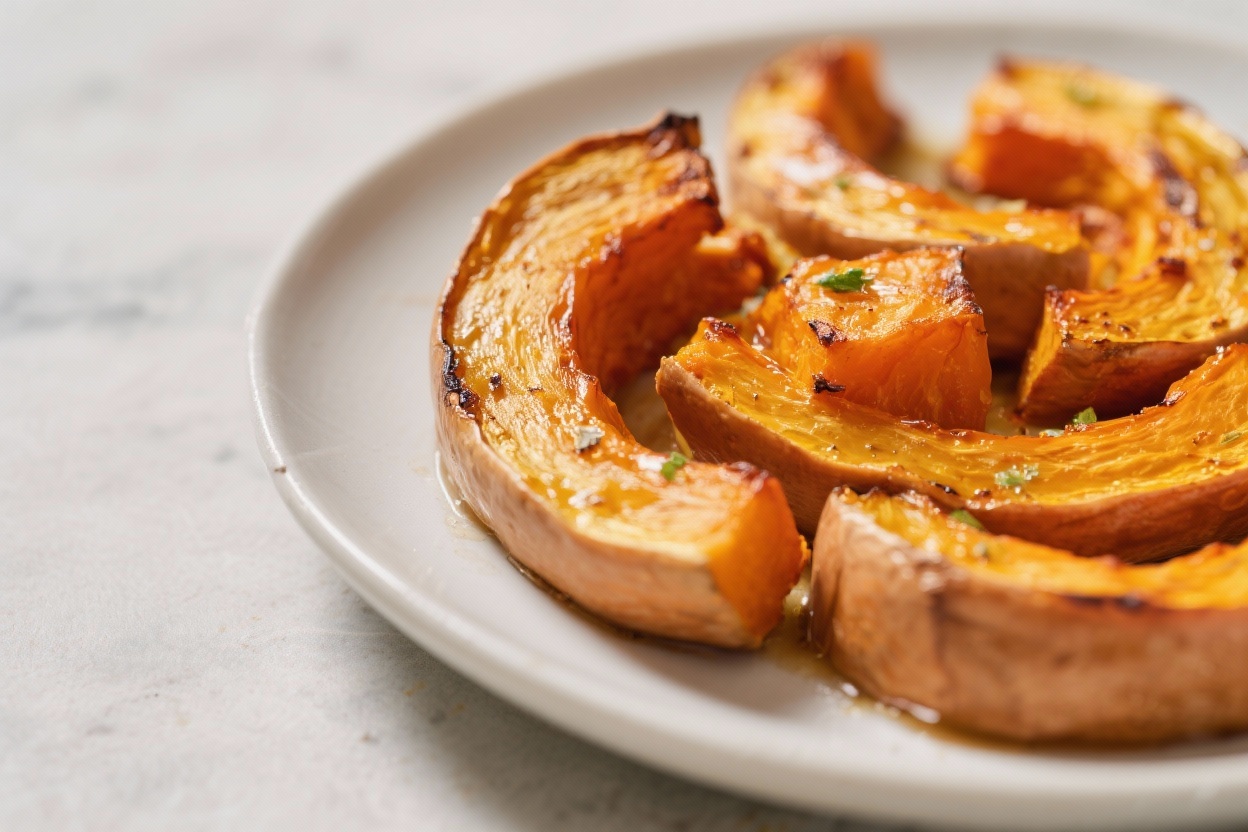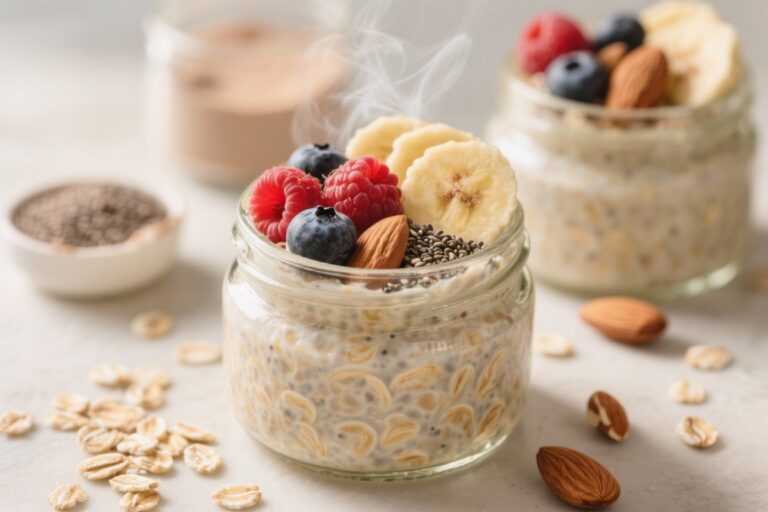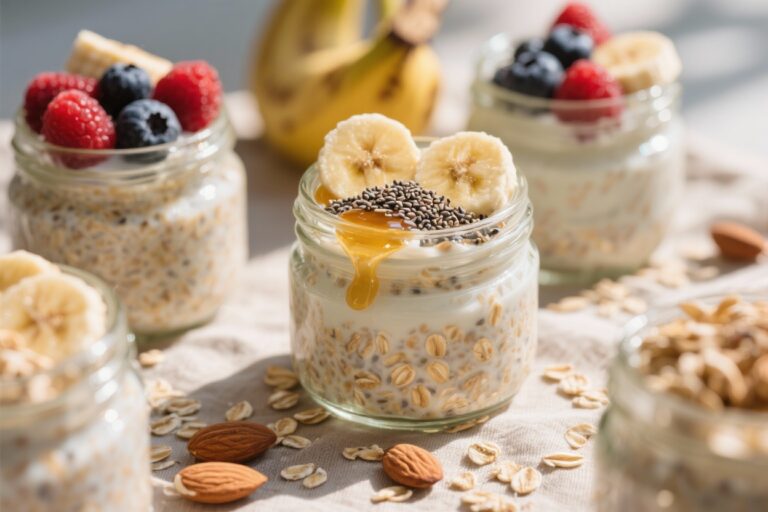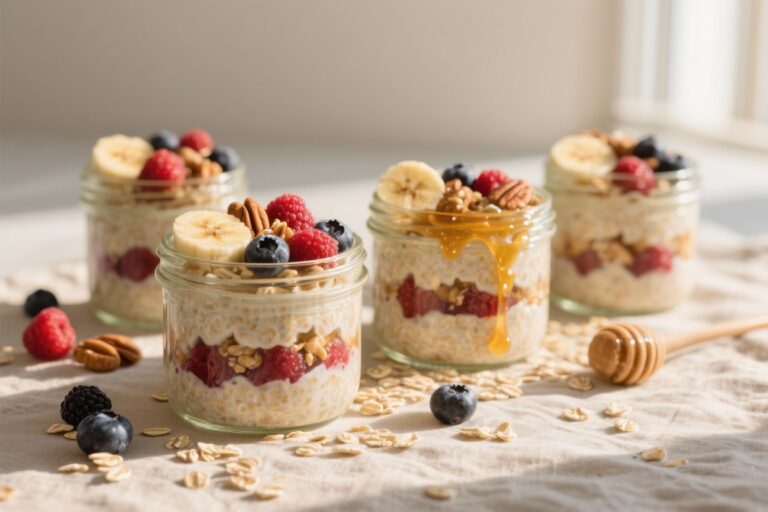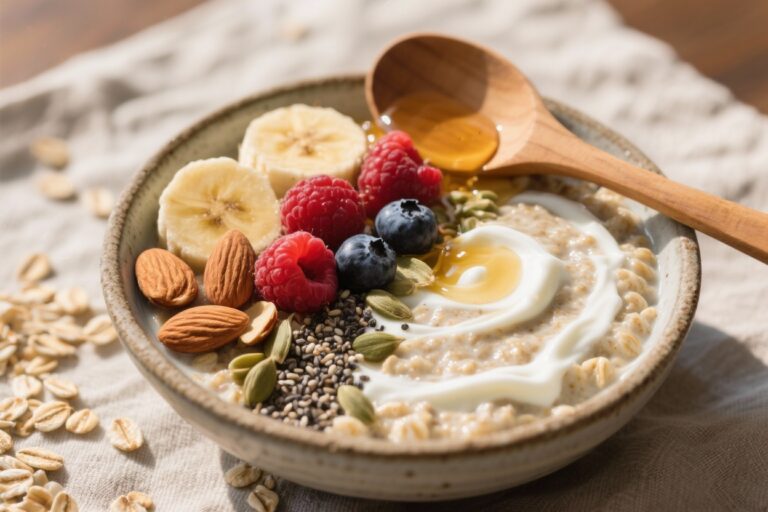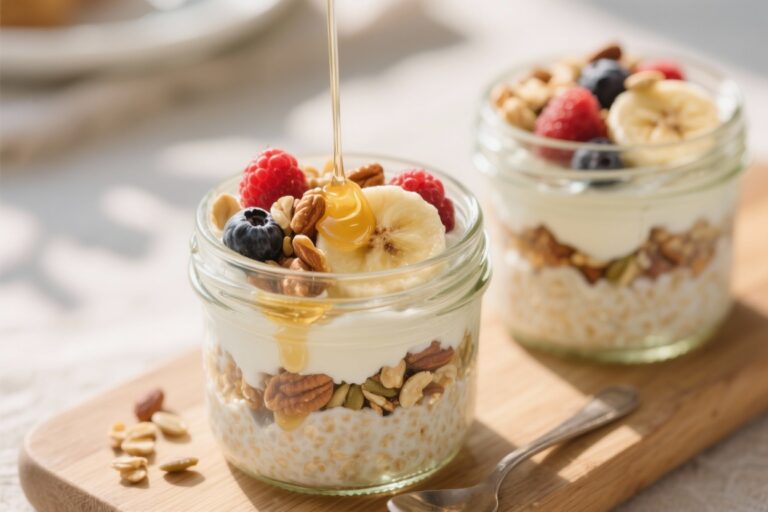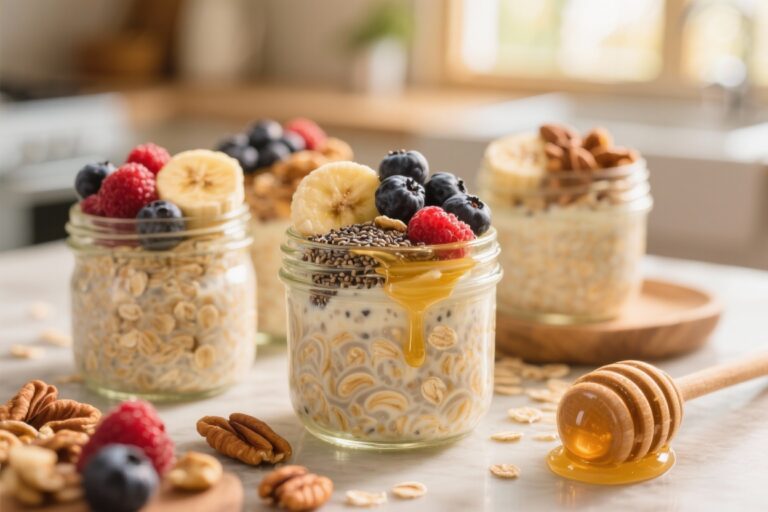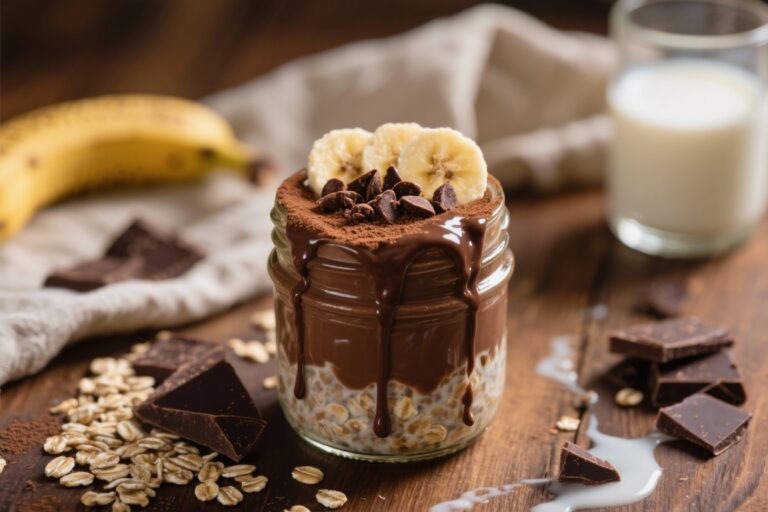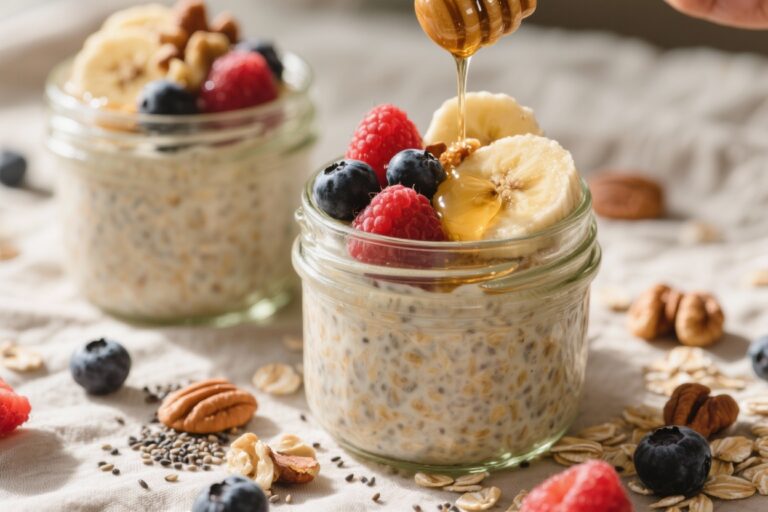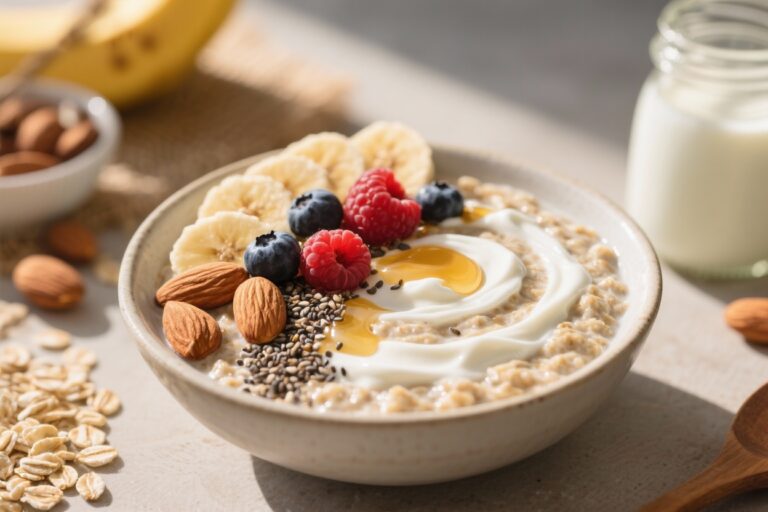Imagine a side dish so good it steals the show from your main course. That’s roasted butternut squash—golden edges, caramelized centers, and flavor that punches way above its weight class. No fancy tools, no chef-level skills, just a few pantry staples and heat.
You’ll make it once and then start planning meals around it. Don’t be surprised if you eat it straight off the tray—consider yourself warned.
The Secret Behind This Recipe
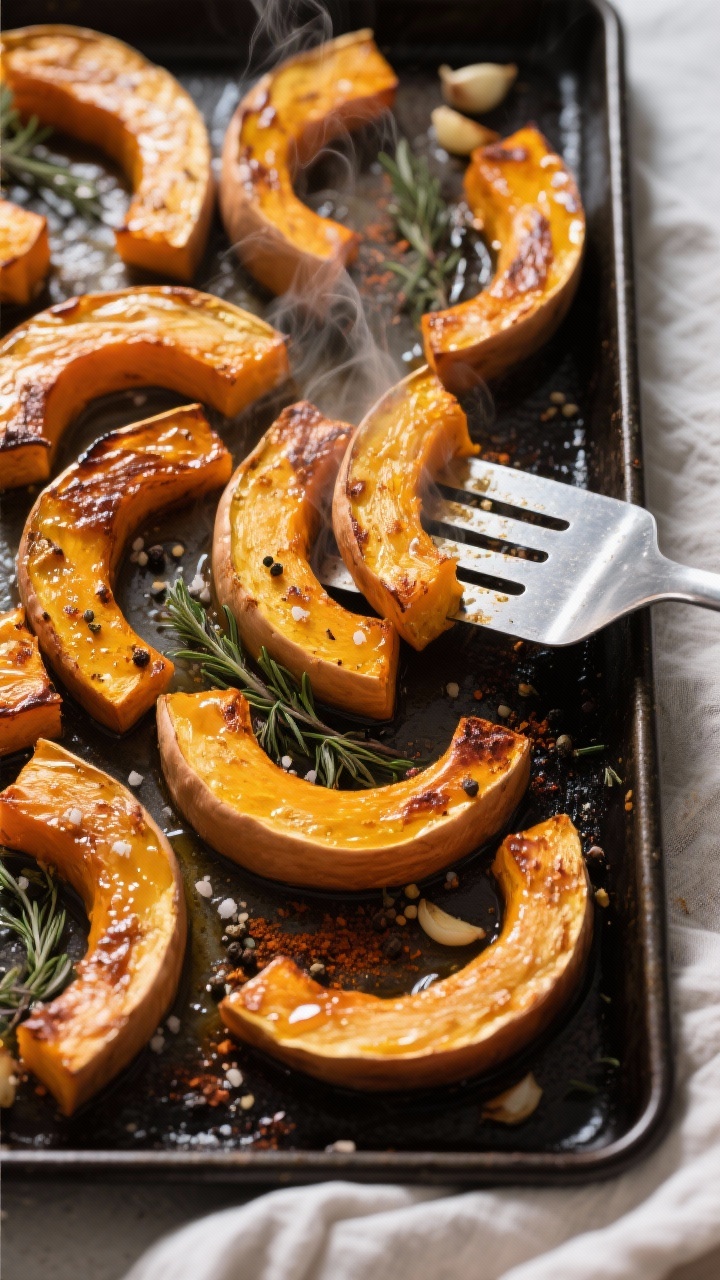
The win here is twofold: high heat and strategic seasoning. Butternut squash has natural sugars that caramelize beautifully at 425°F, creating those irresistible crispy edges.
Add salt early to draw out moisture, and toss with oil so every cube gets evenly coated. We also balance sweet and savory: a whisper of maple (or honey) with garlic, pepper, and a touch of acid at the end. That final splash of lemon or vinegar?
It wakes everything up and makes each bite pop.
What Goes Into This Recipe – Ingredients
- 1 large butternut squash (about 2.5–3 lbs), peeled, seeded, and cut into 1-inch cubes
- 2–3 tablespoons olive oil (or avocado oil)
- 1–1.25 teaspoons kosher salt (to taste)
- 1/2 teaspoon black pepper
- 1 teaspoon garlic powder (or 2 minced fresh cloves)
- 1/2 teaspoon smoked paprika (optional but recommended)
- 1 tablespoon pure maple syrup or honey (optional for extra caramelization)
- 1 teaspoon fresh thyme or 1/2 teaspoon dried (optional)
- 1–2 teaspoons lemon juice or apple cider vinegar, for finishing
- Flaky sea salt, for serving (optional)
Instructions
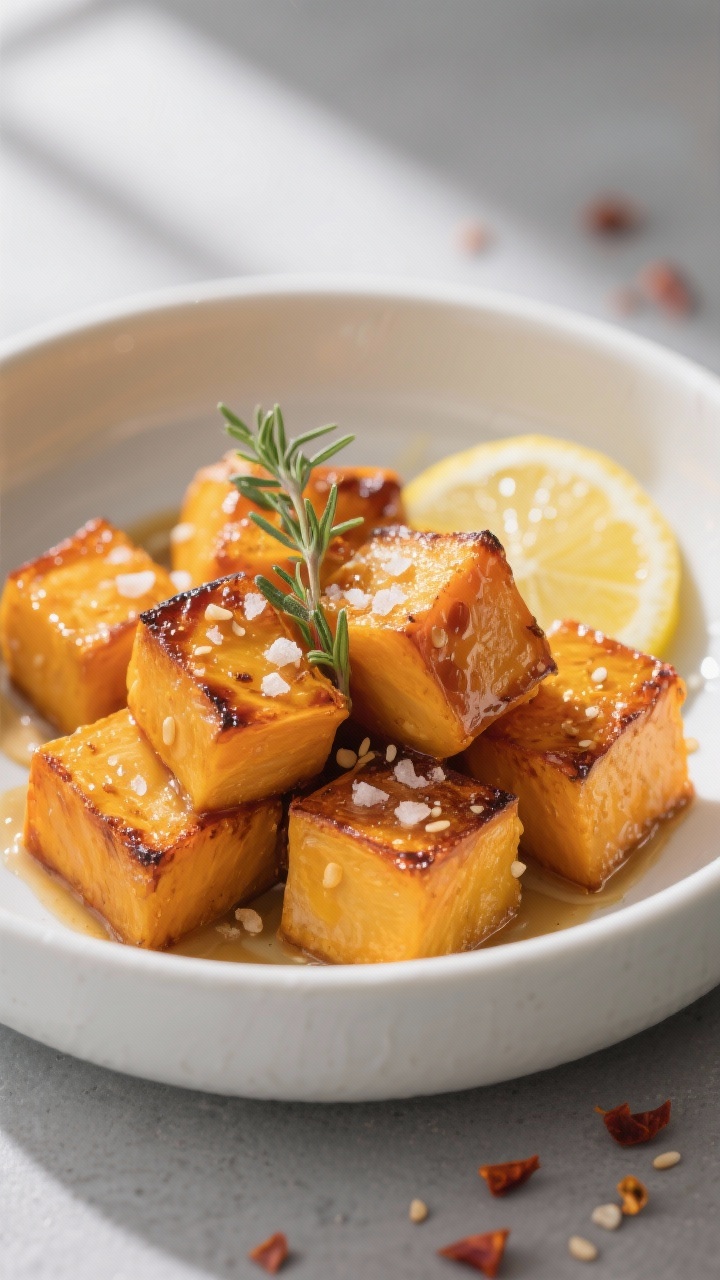
- Preheat like you mean it: Heat oven to 425°F (220°C). Place a large sheet pan inside to preheat—hot pan = better sear.
- Prep the squash: Peel, halve, and seed. Cut into 1-inch cubes for even cooking.
Smaller cubes crisp more; larger cubes stay creamier—your call.
- Season: In a big bowl, toss squash with oil, salt, pepper, garlic powder, smoked paprika, and thyme. If using maple or honey, add it now for extra browning.
- Pan strategy: Carefully remove hot sheet pan and spread squash in a single layer. No crowding—use two pans if needed to avoid steaming.
- Roast, then flip: Roast 20 minutes, flip with a spatula, then roast another 10–15 minutes until edges are deeply caramelized and centers are tender.
- Finish strong: Toss with lemon juice or vinegar. Taste and adjust salt.
Add flaky sea salt for a little crunch if you’re feeling fancy.
- Serve: Hot, warm, or room temp. It’s good at every stage, like that one friend who’s never awkward.
Storage Instructions
- Fridge: Store in an airtight container for 4–5 days. Reheat in a 400°F oven for 8–10 minutes to revive crisp edges.
- Freezer: Freeze on a sheet pan first, then bag for up to 2 months.
Reheat from frozen at 425°F until hot and caramelized.
- Meal prep: Great for bowls, salads, omelets, tacos—yes, tacos. IMO, it’s a meal-prep MVP.
Why This is Good for You
- Beta-carotene bomb: Butternut squash is loaded with vitamin A for eye and immune health.
- Fiber-forward: Helps with satiety, digestion, and steady energy—no sugar crash.
- Heart-friendly fats: Olive oil boosts absorption of fat-soluble vitamins and adds antioxidants.
- Lower-calorie comfort food: It tastes decadent but keeps things light. Your future self says thanks.
What Not to Do
- Don’t crowd the pan: If cubes touch, they steam.
Steaming = soft and pale, not crispy and caramelized.
- Don’t skip the oil: Oil = browning and flavor. Dry roasting can make it leathery.
- Don’t cut unevenly: Different sizes cook unevenly—some burnt, some raw. Chaos.
- Don’t roast too low: 350°F won’t deliver caramelization.
High heat is the move, FYI.
Recipe Variations
- Parmesan + Herb: Toss hot squash with grated Parmesan, parsley, and a pinch of red pepper flakes.
- Maple Chili Crunch: Add maple syrup, chili flakes, and a drizzle of chili crisp after roasting for heat-meets-sweet magic.
- Moroccan-Style: Season with cumin, coriander, cinnamon, and a squeeze of orange. Finish with pistachios.
- Tahini Drizzle: Whisk tahini with lemon, garlic, and water. Drizzle over warm squash and top with sesame seeds.
- Savory Sage & Brown Butter: Brown 2 tbsp butter with fresh sage, pour over the roasted squash, and stand back in awe.
FAQ
Do I have to peel the squash?
You don’t have to, but for cubes, peeled is best for texture.
The skin is technically edible when roasted long enough, but it stays a bit chewy.
Can I use frozen butternut squash?
Yes, but thaw and pat dry first. Toss with oil and roast on a very hot pan to fight off excess moisture and get some color.
How do I cut a butternut squash safely?
Slice off both ends, stand it upright, peel with a sharp peeler, halve lengthwise, scoop seeds, then cut into planks and cubes. A stable cutting board and a sharp knife are non-negotiable.
What protein pairs well with this?
Roast chicken, sausages, salmon, lentils, or crispy chickpeas.
It also crushes as part of a grain bowl with quinoa and feta.
Can I make it without sweeteners?
Absolutely. The squash is naturally sweet. Skip the maple/honey and it’ll still caramelize nicely if your pan is hot and not crowded.
Final Thoughts
This roasted butternut squash is the side that moonlights as a snack and occasionally steals dinner’s thunder.
With minimal effort and a few smart twists, you get crispy edges, creamy centers, and big flavor. Keep the base recipe on repeat, then remix with your favorite variations. Simple, bold, and wildly reliable—just how weeknight cooking should be.
